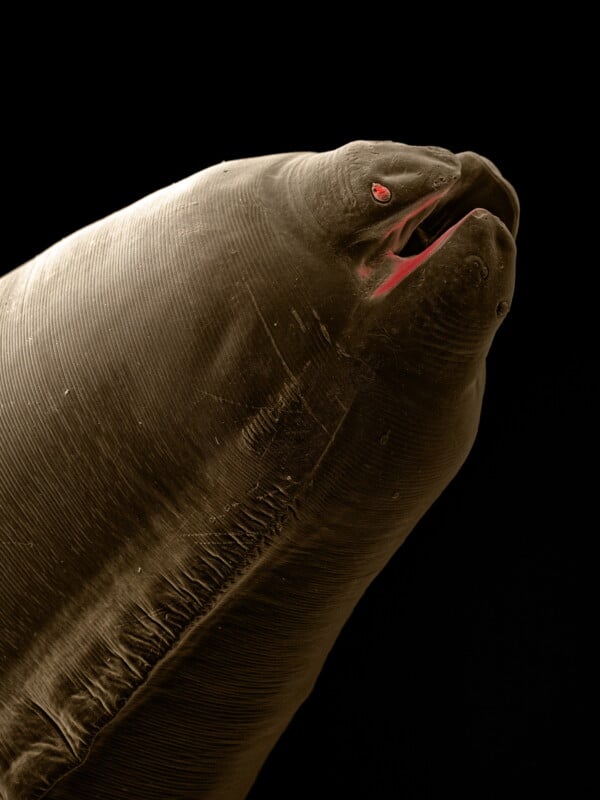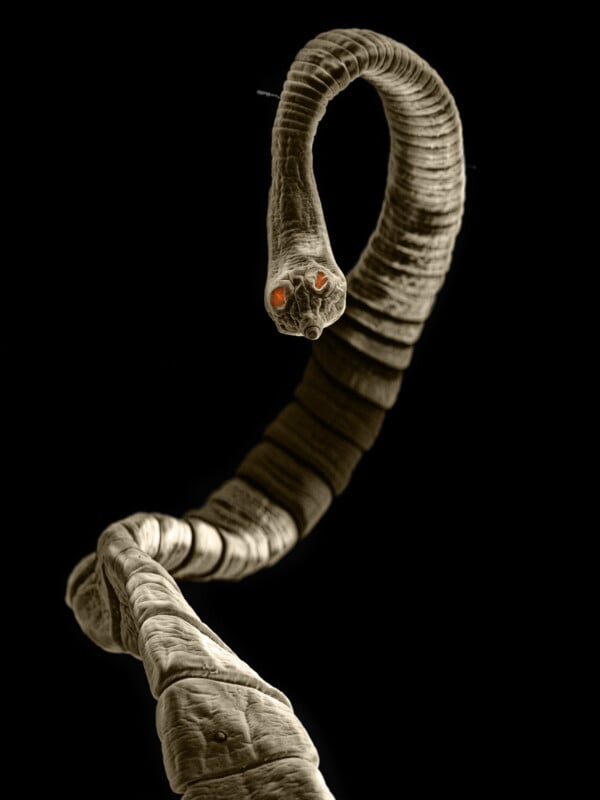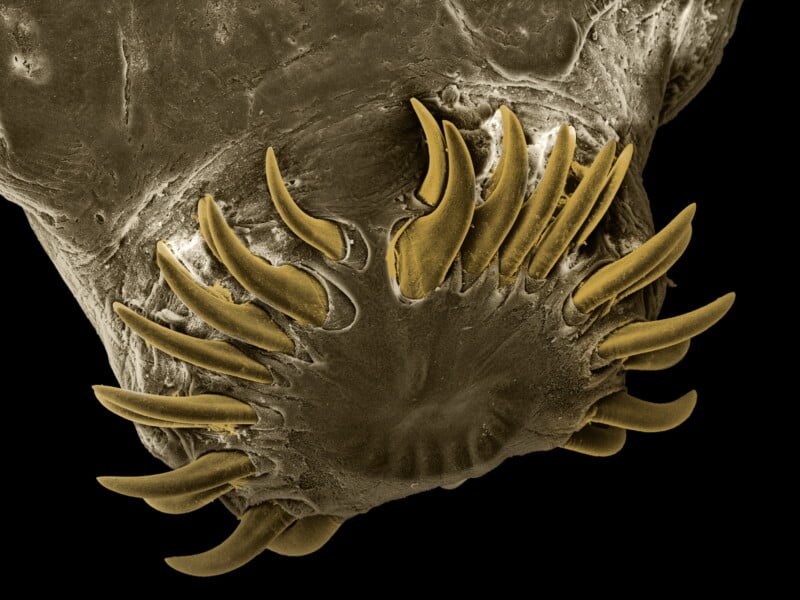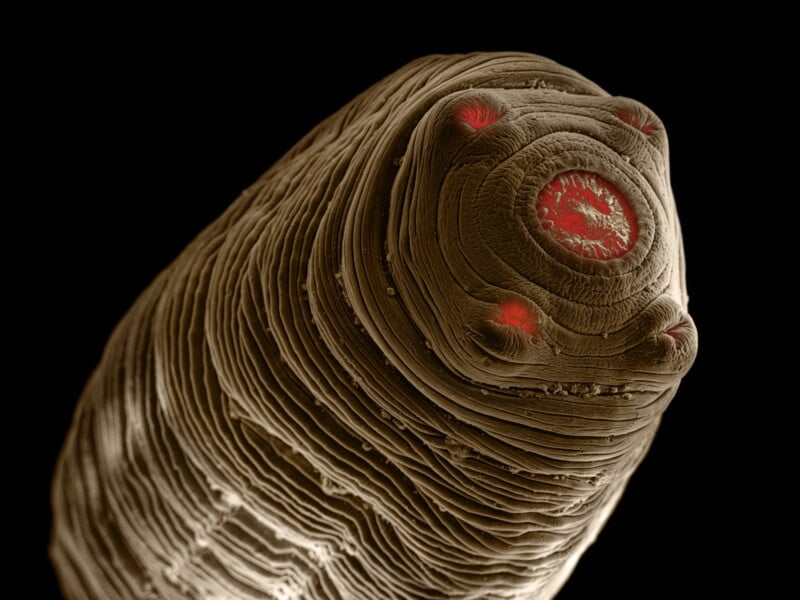
A photographer captured chilling images that show the dangerous worms that can be found lurking inside your pet.
Nature and science photographer David Maitland took the microscopic pictures that reveal the tapeworms, roundworms, and other creepy parasites that live in cats — magnified up to 180 times.

![]()
The grim close-up images show the parasites that are more likely to reside in cats if these animals are not wormed regularly.
Tapeworms, which can also grow up to 16 feet inside dogs — roughly the height of a giraffe — hook into the lining of a pet’s bowels and develop long ribbon-like bodies, causing a variety of illnesses in an animal.

On rare occasions, tapeworms and roundworms can infect humans too — with the latter known to potentially cause serious damage to children’s eyesight.
Hookworms live in the digestive systems of pets. They can infect humans by penetrating the skin, most likely through the feet.

Maitland, who is based in St Andrews, Scotland, worked with pet worming treatment brands Drontal and Dronspot to create the images.
The photography project came about after Drontal’s and Dronspot’s research revealed that eight in 10 cat owners don’t know how often to worm their cats.
The medication treatment brands recommend worming them monthly depending on how at risk your cat is, but only 23% of cat owners follow that guideline.
A Lengthy Process
As well as being a photographer who specializes in small and microscopic forms, Maitland has had an academic career in zoology, physiology, and biophysics which made him perfectly suited to take these images.
“Because of my reputation as a successful wildlife and science photographer specializing in taking more creative images which bridge the worlds of art and science, I was invited to work with Drontal and Dronspot to magnify imagery of these common pet parasitic worms to highlight the shocking nature of the creatures, and expose cat owners to the reality of what could be living inside their pet if they don’t worm their pet frequently enough,” Maitland tells PetaPixel.
Maitland took the images with the help of a Scanning Electron Microscope (SEM) at St. Andrews University and samples of parasite worms obtained from the University of Liverpool. He also used a camera attached to the SEM that took TIFF images at 5120 by 3840 pixels.
The photographer says that the process of capturing the worms inside pets took several weeks.
“The SEM takes images of specimens in a vacuum so the specimens must be carefully prepared and dehydrated so that they can stand up to being bombarded by a stream of electrons without collapsing and being distorted beyond recognition — this process alone takes a couple of days,” Maitland explains.
“The specimens are then coated in a very fine layer of gold. Only black and white images are produced which are then colored in post-production. Our project took several weeks to complete.”
‘Shocking Imagery’
Maitland says he was delighted by how the images turned out and how the creatures resembled something from a gory sci-fi movie.
“It is always very nerve-wracking waiting to see the first results emerge from the microscope. There are questions like: Are the specimens well preserved? Are they positioned correctly so that we get the best viewing angle?” Maitland says.
“But I was thrilled at how the imaging technique I used was able to highlight in detail how well adapted these worms are to their parasitic existence.
“Each kind of worm spends its life attached to the inside of the pulsating gut of a cat, holding on with circles of hooks and suckers.
“I was especially pleased that they looked so alien and took on a real personality. I certainly would not wish to bump into one late at night!
“The Drontal and Dronspot research found that cat owners don’t give their pets regular de-worming medication — I hope the shocking imagery encourages pet owners to change their ways!
Following the research findings, Drontal and Dronspot are working with the Worldwide Vet Service to donate 5,000 doses of Drontal Worming medication to the charity, to provide relief for cats in hard-to-reach places across the globe.
More information on David Maitland’s work can be found on his website.
Image credits: All photos by David Maitland.
